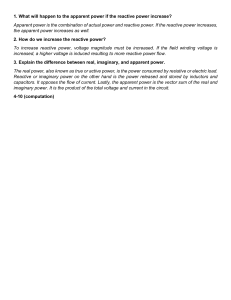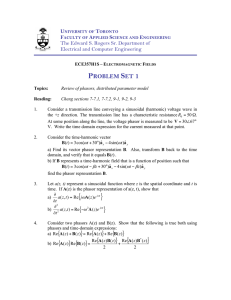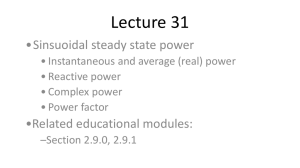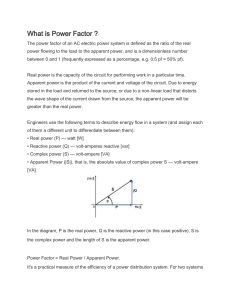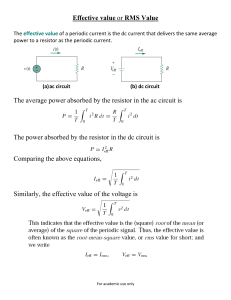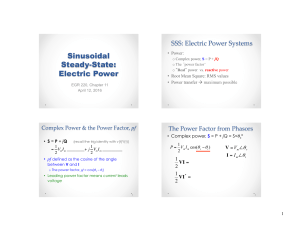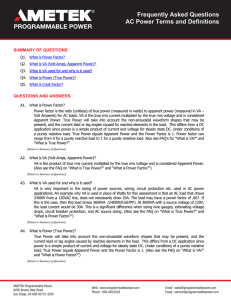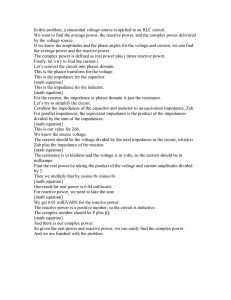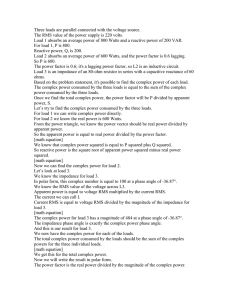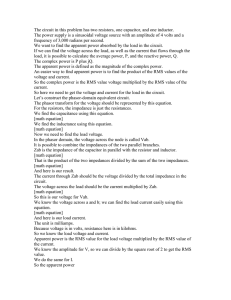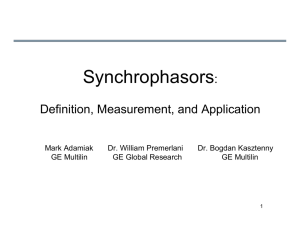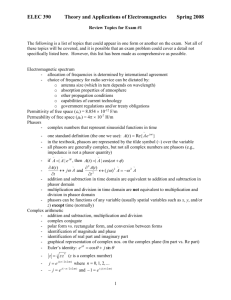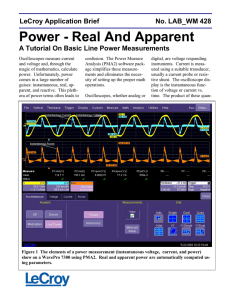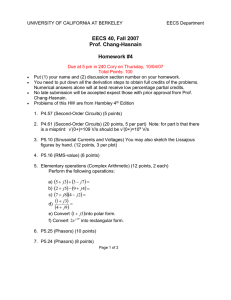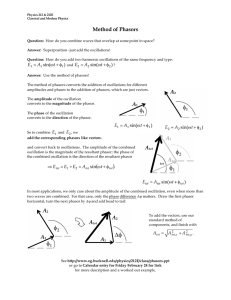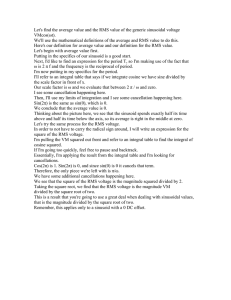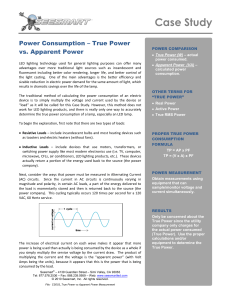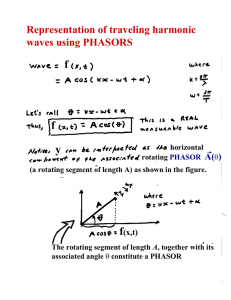Document 11121949
advertisement
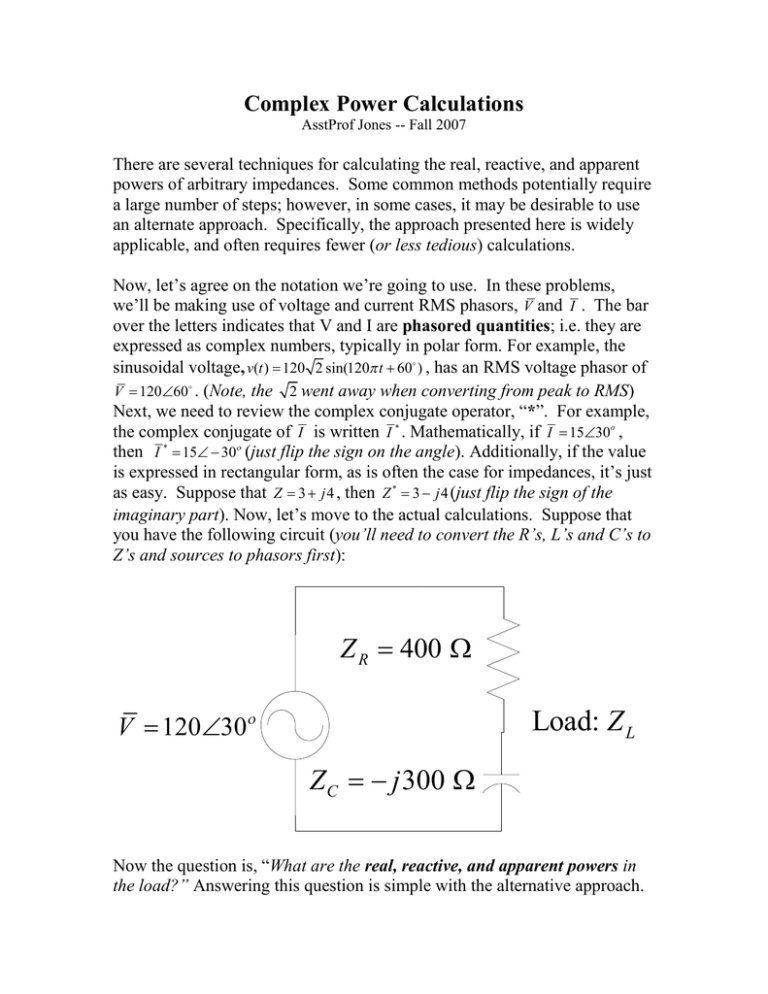
Complex Power Calculations AsstProf Jones -- Fall 2007 There are several techniques for calculating the real, reactive, and apparent powers of arbitrary impedances. Some common methods potentially require a large number of steps; however, in some cases, it may be desirable to use an alternate approach. Specifically, the approach presented here is widely applicable, and often requires fewer (or less tedious) calculations. Now, let’s agree on the notation we’re going to use. In these problems, we’ll be making use of voltage and current RMS phasors, V and I . The bar over the letters indicates that V and I are phasored quantities; i.e. they are expressed as complex numbers, typically in polar form. For example, the sinusoidal voltage, v(t ) 120 2 sin(120 t 60 ) , has an RMS voltage phasor of V 12060 . (Note, the 2 went away when converting from peak to RMS) Next, we need to review the complex conjugate operator, “*”. For example, the complex conjugate of I is written I * . Mathematically, if I 1530o , then I * 15 30 (just flip the sign on the angle). Additionally, if the value is expressed in rectangular form, as is often the case for impedances, it’s just as easy. Suppose that Z 3 j 4 , then Z * 3 j 4 (just flip the sign of the imaginary part). Now, let’s move to the actual calculations. Suppose that you have the following circuit (you’ll need to convert the R’s, L’s and C’s to Z’s and sources to phasors first): Z R 400 V 12030 Load: Z L Z C j 300 Now the question is, “What are the real, reactive, and apparent powers in the load?” Answering this question is simple with the alternative approach. The equation you’ll be using is: VV * S P jQ V I * I I * Z Z * (1.1) So, in the circuit above, since we know the voltage across the entire load, and we know the impedance of the load, we have that: VV * (12030 )(12030 )* (12030 )(120 30 ) S * Z (400 j 300)* (400 j 300) 1202 (23.0 j17.3) VA 400 j300 This means that the real power if 23.0 W and the reactive power is 17.3 VAR capacitive. Since the apparent power is the hypotenuse of the power triangle: (remember that S is a complex number, so its magnitude is the length of the hypotenuse) |S| Q Power Triangle: S = P + jQ P If we convert S into polar form using the calculator, we’ll get that: S (23.0 j17.3) 28.836.9 VA This means that the apparent power is 28.8 VA. Although the complex power S can be expressed as a polar number, it IS NOT a phasor. Remember, phasors come from sinusoids in the time domain, and that’s not what’s going on here. That’s it. We’re done.
